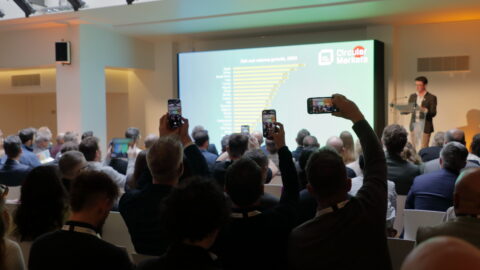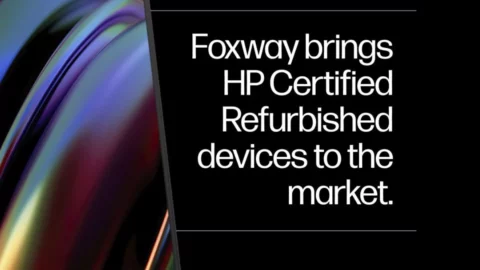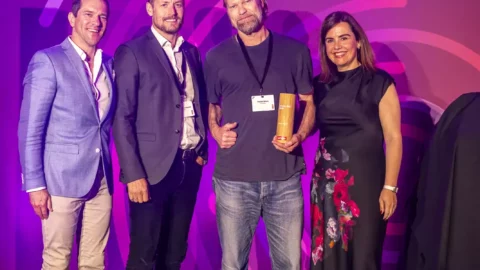On average, production can make up approximately 80% of a device’s lifecycle footprint. By giving used devices a second life, we save energy and finite resources that would otherwise be consumed in the manufacturing of new products. Hence buying and using refurbished tech means a significant reduction in the environmental footprint.
In fact, according to a 2019 report by the European Environmental Bureau:
- a 1-year lifetime extension of all notebook computers in the EU would save 1.6 Mt CO2 per year by 2030, the equivalent of taking 870,000 cars off the roads;
- and a 1-year lifetime extension of all smartphones in the EU would save 2.1 Mt CO2 per year by 2030, the equivalent of taking over a million cars off the roads.
These are good averages to remember on a broad scale; however, it’s also important to dig deeper and truly understand what determines our baselines in these comparisons. The upcoming Handprint report is a good example of illustrating the fluctuating nature of the numbers our industry is working with daily.
The new numbers and what’s behind them
The measured positive impact of a refurbished device may vary considerably depending on how we define the baseline criteria for brand-new tech — a broad average of a variety of brands and models, or a more detailed selection of specific devices. However, we’re most interested in the accuracy and transparency of a refurbished device footprint.
We’ve currently kept our report to three main product categories: laptops, smartphones, and tablets. The major impactors may vary depending on the category, but one aspect stands true for all — considering the used devices are handled as waste, they don’t carry production legacy.
According to our latest research and analysis:
1. The total climate impact of a Foxway refurbished laptop is 11.10 kg CO2-eq.
The biggest impact is caused by the production and transport of parts that are used to refurbish the laptops. Most of the part-related impact is caused by the production of brand-new spare parts. The second biggest contribution comes from the transport of refurbished laptops to the client (export), followed by emissions released while transporting the devices we’ve recovered from the market to our processing centers.
2. In comparison to more generic data presented in the previous research published in 2021, we’ve developed a split between Apple and Android smartphones:
- The total climate impact of a Foxway refurbished Apple smartphone is 1.58 kg CO2-eq.
The biggest contribution is caused by the transport of refurbished smartphones to the client (export), following the electricity and heat use in company facilities in Tartu, Estonia, and the production and transport of parts that are used to refurbish the mobiles. Most of the part-related impact is caused by the production of brand-new spare parts.
- The total climate impact of a Foxway refurbished Android smartphone is 3.13 kg CO2-eq.
The main source of emissions derives from the production and transport of parts that are used to refurbish the mobiles, and the majority of it is caused by the production of brand-new parts. The second biggest contributor is the transport of refurbished smartphones to the client (export), following the electricity and heat use in company facilities in Tartu, Estonia.
3. The total climate impact of a Foxway refurbished tablet is 3.87 kg CO2-eq.
The biggest contribution is caused by the transport of refurbished tablets to the client (export), following the production and transport of parts that are used to refurbish the tablets. Most of the part-related impact is again caused by the production of brand-new spare parts.
Why are some of the numbers bigger than before?
In these calculations, we are not only reliant on our own choices but also depend on the general standards of measuring climate impact for one or another factor. For example, the recent analysis considers the new Ecoinvent EF unit for air transport (kg of CO2e/t-km) which has risen remarkably. Air transport continues to be one of the key players in providing effective solutions to our customers. Adding the notable rise of the standardized unit, this has directly affected the footprint numbers for our refurbished devices when compared to the results we presented in our previous Handprint reports of 2021.
The same applies to other main contributors to the total sum of the footprint. Although we choose our partners carefully, we are directly influenced by any changes they make as well. For example, should a producer of spare parts exclusively opt for renewable energy sources, it would have a positive effect on the footprint of the refurbished device. Likewise, we will continue to raise our standards in quality, which in turn may also influence the climate impact.
“In terms of climate impact, everyone strives for the smallest footprint possible. However, to achieve that, we must focus on accuracy in reporting, being honest and transparent in our numbers. We must know what is behind the numbers and what influences them — then we can also work on reducing our climate impact. Reusing technology and implementing the principles of circular economy play an important part in this transition.”
Stefan Nilsson, Interim Chief Strategy and Sustainability Officer
Measurable science-based targets and research will continue to drive the choices we make. Whether it’s to enhance our product quality or the efficacy of our refurbishing processes, we aim for well-calculated decisions. We’ll keep digging and perfecting our methods. Even if our discoveries lead to higher footprint numbers like today, we’ll always be transparent in our work.
Sustainability




